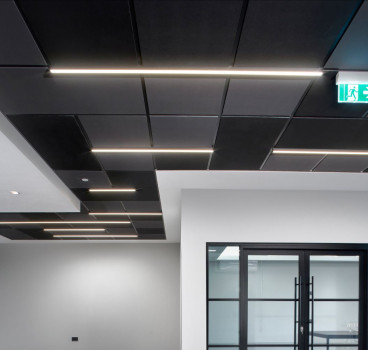Why the Building Safety Regulator is a necessary but challenging direction for the industry
Following the tragic events at Grenfell Tower in 2017 and Dame Judith Hackett’s subsequent inquiry, the Building Safety Act (BSA) was introduced across England and Wales in 2023. Through this, the Building Safety Regulator (BSR) was established to oversee building safety, enforce compliance and set standards. While this is undoubtedly a positive step forward, Alex Hill, Managing Director at Whitecode Consulting, reveals concerns over work being outsourced and underlines what makes a successful application and how mechanical and electrical (M&E) consultants can help.
While the BSR was launched as a new regulatory body to enhance building safety and increase transparency across the built environment, it has been accused of delaying project completions by taking longer than eight weeks to decide on an application. In fact, since 2021, just 871 affordable homes have been built in London alone due to a perceived ‘slow planning process’.

While the increased regulatory scrutiny may well be enhancing building safety and limiting the number of buildings being built poorly, it is argued that it is hindering the UK’s efforts to reach its housebuilding targets. Additionally, there are concerns that some of the vital assessment and certification services are being outsourced to those in competition with the contractors and consultants overseeing the respective projects.
The need for impartial trained BSR specialists
As one of the UK’s leading mechanical, electrical and plumbing (MEP) design consultants, Whitecode Consulting works on major building developments across the UK. Unfortunately, a noticeable trend has been identified by the company in recent months, with many of its applications to the BSR being handled by its competitors – rather than impartial assessors.
While obviously increasing the likelihood of conflict of interest, this alarming rise in outsourcing of work highlights a major gap in the market in regard to trained and impartial specialists in BSR application assessment. In such a competitive market that requires incredible expertise and knowledge, having a training scheme in place to enable the development of BSR specialists, rather than employing those already working across the built environment, isn’t just a recommendation; it’s a necessity.
Related read: Discover real-world examples of fire-safety failures in schools.
Ensuring successful BSR applications
With just over 10% of building safety applications for new build projects currently being approved at Gateway Two, it is vital for contractors, architects, and building developers to understand what they need to do to increase the likelihood of a successful application.
To avoid an unclear or incomplete application, it’s imperative those in charge of projects must include a defined list of all project elements that require compliance, such as structural and fire safety.
Similarly, any standards, documents or codes the building design follows must be specified, along with details of why this is the case. Clear rationales will help illustrate and clarify any standards that need to be met.
Finally, with the BSR not wanting to look through pages of drawings in order to decipher them, architects, contractors and building developers must include detailed explanations of how compliance is achieved for each element of the project. This will streamline the assessment process and ensure the BSR can verify any compliance efficiently.
Close collaboration with MEP consultants is key
With the cost-of-living crisis and rising construction costs prompting contractors to pay much closer attention to budgets, some choose to outsource building design to lower their overhead and labour costs. However, doing so comes with significant risks.
In fact, outsourcing the design can often make it difficult to maintain consistent quality. Meanwhile, inaccurate or ineffective designs can quickly impact the entire project – increasing time taken to correct them and the likely costs involved. Furthermore, the team being passed the work may not have the required experience and expertise in the specific type of building or necessary designs.
Working closely with specialist MEP design consultants from the beginning of the project can ensure quality is maintained throughout, all requirements have been considered and accounted for, and contractors and site engineers have full control over all design processes and quality standards.
Involving MEP design consultants from the very beginning of the project ensures safety is a major focus of the design and all drawings and specifications are aligned with the client’s requirements.
Additionally, the thorough documentation of all relevant safety procedures, materials used, inspection and maintenance programmes, and competencies is absolutely crucial to ensure compliance and adherence to the Gateway requirements brought in through the BSA.
Similarly, the provision of necessary information and support that comes with close collaboration with experienced MEP design consultants will increase the likelihood of the project obtaining the required building control approvals.
Quite rightly, the tighter regulations are sharpening the focus on quality and safety standards across the built environment and increasing transparency – something the construction industry vitally needs.
This exacerbates the need for the industry to work collectively to improve these standards, and that starts with seeking the expertise of experienced MEP design consultants, such as Whitecode Consulting. Doing so not only helps contractors, architects, and designers increase their chances of successful BSR applications; it also ensures a better and safer built environment for construction professionals and occupants alike.
Additional Blogs

When fire breaks out who really knows the system
The story that caught my attention recently wasn’t about fire growth or building loss, it was about confusion. Specifically, the confusion faced by the fire service when arriving at buildings...
Read moreThe design and development of Nexus Layouts
When Zentia set out to rethink the suspended ceiling, the brief was clear: deliver greater creative freedom for designers, more distinctive visual identity for clients, and a solution that could keep...
Read more

The 100-year construction project or why longevity Is the new sustainability
For decades, the construction sector has defined sustainability through metrics such as operational energy, embodied carbon, material efficiency and circularity. These measures remain vital, but a...
Read more